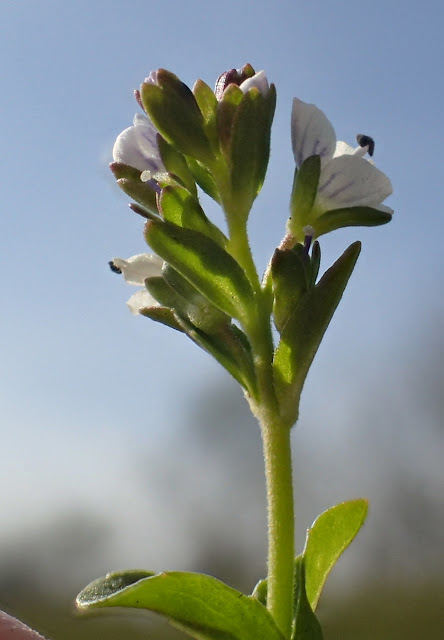 |
| Larch - photographed on 18 April - this has now turned greener on the trees |
------------------------------
Early Purple Orchid: This grows on limestone grassland and sometimes in limestone woodland. Several people sent in pictures
Early Purple Orchid by Tamsin Candeland on 21 April
 |
| Early Purple Orchid by Sheila Gordon |
------------------------------
-------------------------------
- |
| A view of the Giggleswick Church tower with Flowering Cherry in front. ------------------------------ |
 |
| Flowering Current - Ribes sanguineum - This is a garden plant that comes form W N America. the leaves should be scented when crushed. The photo was taken on 25 April on a beautiful sunny morning - The air is clear and there are no Aeroplane Trails because of the reduced aircraft. Jeremy Bartlett wrote an excellent blog article on this here I feature annother member of the current family.. Gooseberry - Ribes uva-crispa in my next post here Click here for more flowers coming out around Settle |


















































